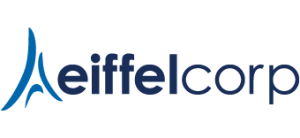
In 2018, we can safely say we are no longer on the brink of a technological revolution, but part of it. Known as the Fourth Industrial Revolution, this is the new industrial era where technologies fuse to blur the lines between the physical, digital and biological spheres. What this means for the future of today’s’ graduates is uncertain. What roles will they need to fulfil and how will their studies equip them for the unknown?
While there is no one correct answer, there are ways to prepare today’s students for the 21st Century Workplace. In the learning environment this would include developing the core skills students will need to adjust to the new workforce challenges, known as the four C’s: Communication (acquire the skill to explain ideas), Critical Thinking (learn how to solve problems), Creativity (applied thinking that is outside the box) and Collaboration (understanding how to work with others effectively).
But besides developing these skills, there should be practical support for the transition from graduating to working. Jeff Selingo is an expert on the topic of preparing students for this new dynamic work working environment. Author of the New York Times best-selling book “There is life after college,’ Jeff Sellingo was a keynote speaker at Symplicity’s CSM Symposium this year. Here he shared very specific points on how to prepare students for the 21st Century workforce. His recommendations for preparing students for jobs of the future included increasing access to employment opportunities, provision of hands-on vocational training and helping students to develop a career narrative. A more in-depth discussion of these points follows below:
Increase accessibility to career services from the start
“We really need, as institutions, to start treating career services as the next big student amenity. We need to treat it like we do student success and retention efforts, and spend the amount of money and effort on it that we’ve done on student retention over the last couple of years.”
Students attend a higher education institute to get a job one day. This means it is essential that career centers at these institutions guide students toward the careers that will be fulfilling. For students to get a better idea of what type of job they would enjoy, they need to gain experience in various fields. It is also important for students to learn how to sell their strengths in the best way possible, to potential employers. Career services are the perfect resource for career guidance, resume building, internships, job opportunities, and salary expectations. If students learn to identify their needs early on in their studies, they can start making the right decisions sooner, achieving their goals faster.
Provide hands-on vocational training
“It’s not about picking a career at that young age but it’s about exposing students to the options available to them and the pathways that lead to those jobs. That’s the key to integrating career planning from day one.”
While a formal education will always be the main focus for higher learning institutions, it is important to expose students to multiple skills before they enter the workforce. This should not just be part of their qualification requirements, adding credits to modules to tick off, but also about gaining knowledge from real-life situations. Yes, students can follow a syllabus and complete hands-on tasks to pass, but learning from day-to-day experiences should be a stand-alone exercise with no credit awards. Career planning at an early age is extremely important, so students are exposed to what suits them and what doesn’t.
Help students develop their career narratives
“We need to help students craft their story so that they are able to articulate their skills and how these could transfer to a job.”
CV’s are important, but being able to elaborate on what those bulleted items on a CV in an interview situation are crucial. Students should know how to share more about their work experiences, explain what skills they’ve developed and how they can apply those skills to the position they are applying for. A candidate should be able to tell their own personal story, explaining where they come from and where they see themselves in five years.
Symplicity CSM can help career centers at higher institutions achieve these goals. Symplicity CSM offers the tools to connect skilled students with potential employers. It further gives departments the ability f to ‘talk’ to each other and ultimately helps students find value and relevance in their studies and increases the employment success rate of institutions.
Want to understand how Symplicity CSM can work for your institution? Get in touch with us for a demonstration.



